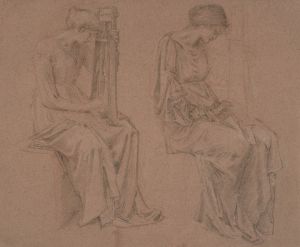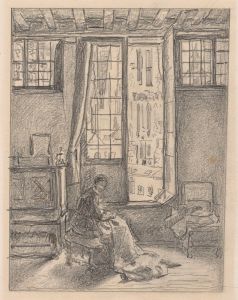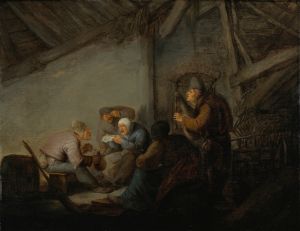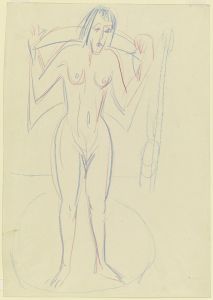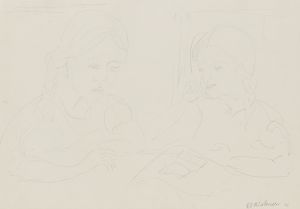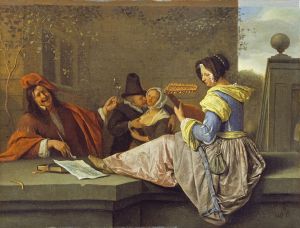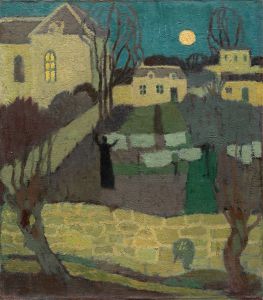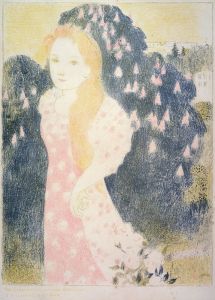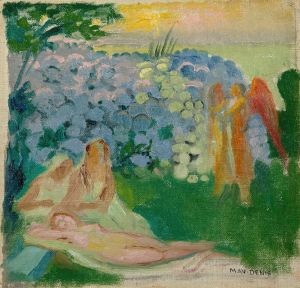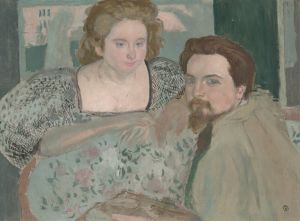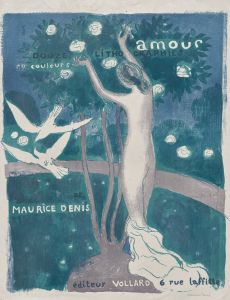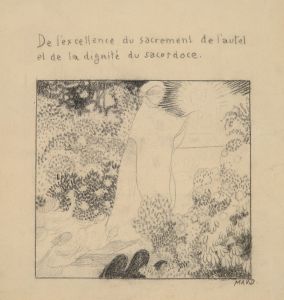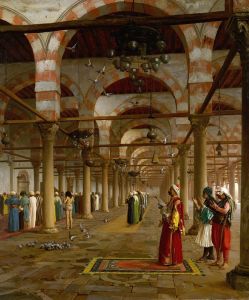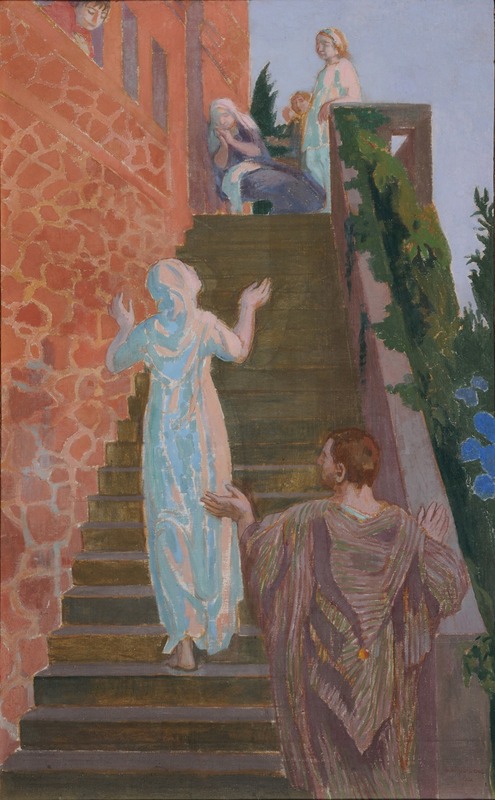
Visitation dans l’escalier de ‘Silencio’
A hand-painted replica of Maurice Denis’s masterpiece Visitation dans l’escalier de ‘Silencio’, meticulously crafted by professional artists to capture the true essence of the original. Each piece is created with museum-quality canvas and rare mineral pigments, carefully painted by experienced artists with delicate brushstrokes and rich, layered colors to perfectly recreate the texture of the original artwork. Unlike machine-printed reproductions, this hand-painted version brings the painting to life, infused with the artist’s emotions and skill in every stroke. Whether for personal collection or home decoration, it instantly elevates the artistic atmosphere of any space.
Maurice Denis was a prominent French painter and a key figure in the Symbolist and Nabi movements, known for his contributions to the development of modern art in the late 19th and early 20th centuries. His work often explored religious themes, and he was deeply influenced by his Catholic faith. One of his notable works is "Visitation dans l’escalier de ‘Silencio’," which reflects his interest in religious subject matter and his unique approach to composition and color.
"Visitation dans l’escalier de ‘Silencio’" is a painting that exemplifies Denis's style, characterized by its decorative quality and emphasis on flatness and color harmony. Denis was known for his belief that a painting should primarily be a flat surface covered with colors assembled in a certain order, a principle that he famously articulated in his 1890 statement, "Remember that a picture, before being a battle horse, a nude woman, or some anecdote, is essentially a flat surface covered with colors assembled in a certain order."
The painting depicts the biblical scene of the Visitation, where the Virgin Mary visits her cousin Elizabeth, who is pregnant with John the Baptist. This subject was a popular theme in Christian art, symbolizing the meeting of the Old and New Testaments. Denis's interpretation of this scene is set within a staircase, possibly referencing the architectural setting of the club 'Silencio,' although specific details about the location or its significance in the painting are not widely documented.
Denis's use of color and form in "Visitation dans l’escalier de ‘Silencio’" reflects his Symbolist tendencies, where the focus is on conveying spiritual and emotional truths rather than depicting realistic scenes. The painting likely features Denis's characteristic use of muted, harmonious colors and simplified forms, creating a sense of serenity and contemplation. His work often sought to evoke a sense of the divine and the eternal, aligning with his religious convictions.
The Nabi movement, of which Denis was a part, was a group of avant-garde artists who sought to break away from the naturalism of Impressionism and explore more symbolic and spiritual content in their work. Denis, along with other members like Pierre Bonnard and Édouard Vuillard, emphasized the importance of the artist's subjective experience and the symbolic meaning behind the visual elements of a painting.
While specific details about "Visitation dans l’escalier de ‘Silencio’" are limited, it is clear that the work fits within Denis's broader artistic and philosophical framework. His paintings often serve as meditations on faith, beauty, and the role of art in expressing the ineffable aspects of human experience.
Maurice Denis's legacy is significant in the history of modern art, as he helped pave the way for future movements such as Fauvism and Cubism by challenging traditional notions of representation and emphasizing the importance of color and composition. His work continues to be studied and appreciated for its innovative approach and its deep engagement with spiritual and philosophical themes.





